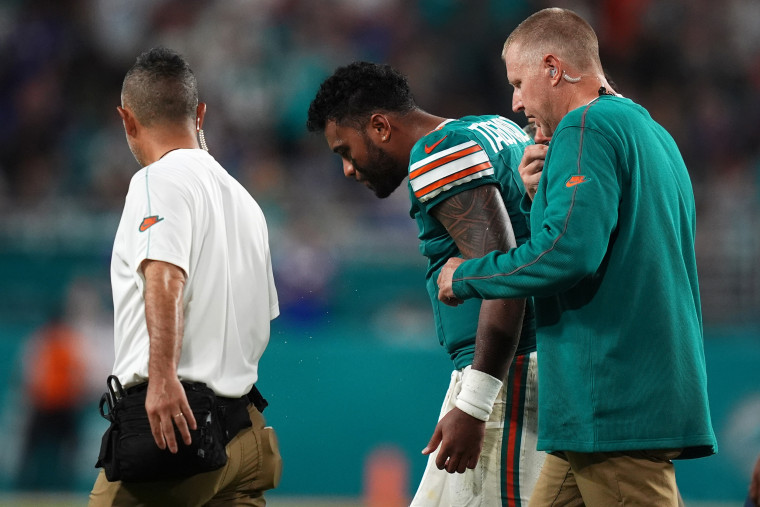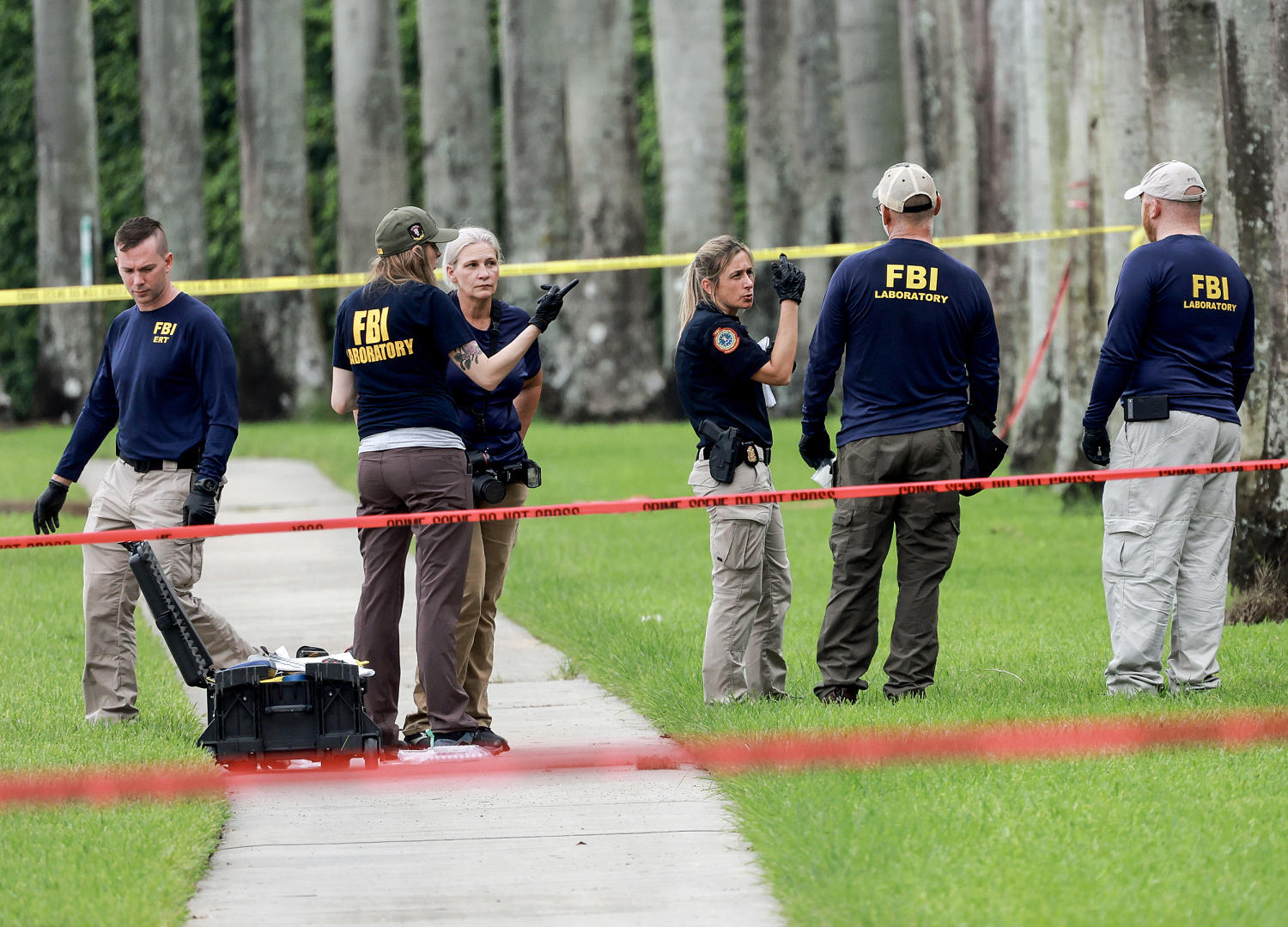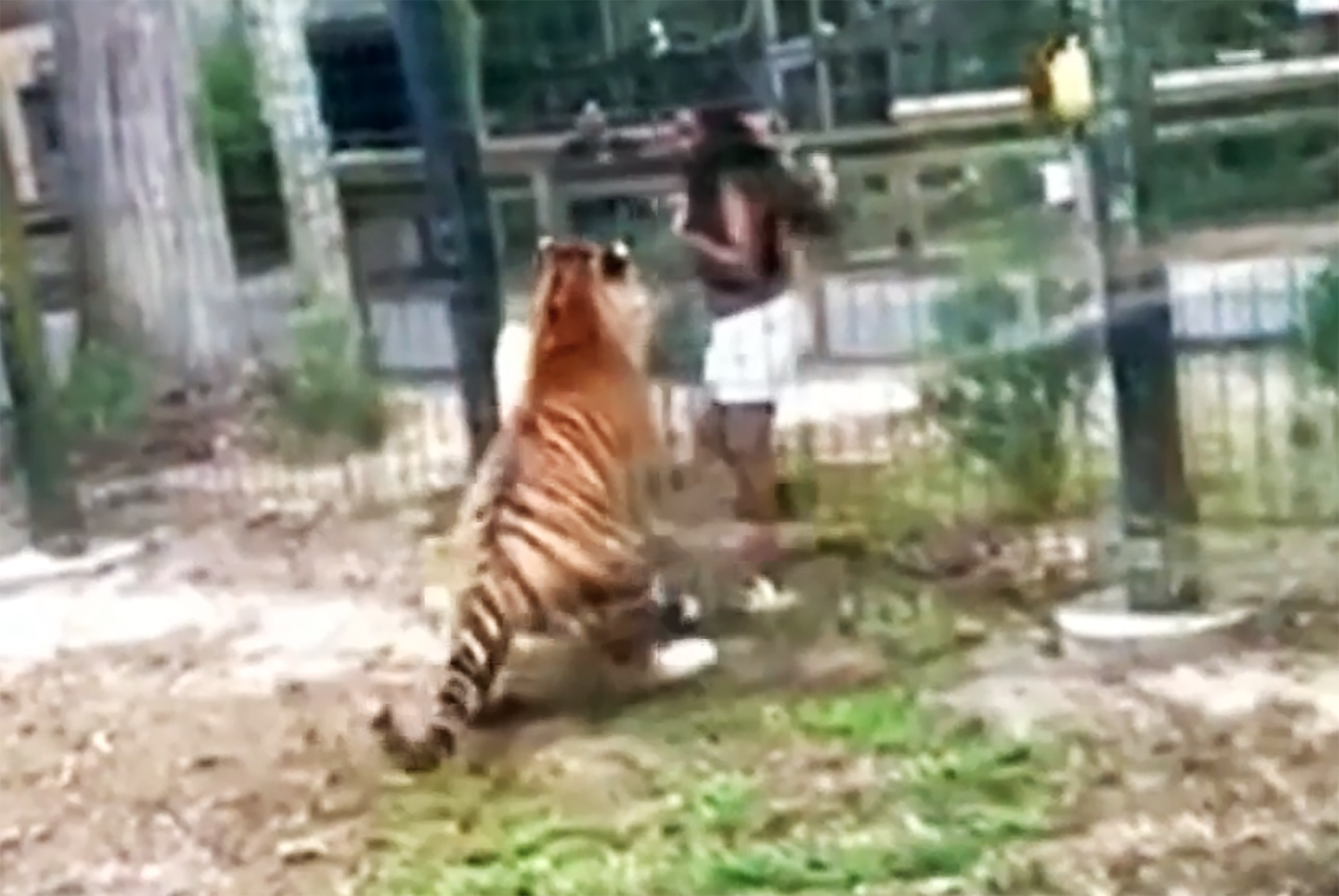When Miami Dolphins quarterback Tua Tagovailoa collided headfirst with Buffalo Bills safety Damar Hamlin during Thursday night’s football game, it was immediately apparent to medical experts that Tagovailoa had suffered a serious concussion.
Knocked down on the field and lying on his back, Tagovailoa’s right arm extended up into the air as the fingers on his hand curled, a reflex known as the fencing position that happens after a significant brain injury. It was the third diagnosed concussion of his NFL career after two back-to-back concussions in 2022.
Experts say repeated head injuries can increase the risk for long-term health problems, such as chronic traumatic encephalopathy, or CTE, a neurodegenerative disorder that is associated with changes in mood, behavior and cognition, and has been diagnosed in hundreds of NFL players after their deaths. But precisely who goes on to have CTE or other long-term health issues after a head collision is somewhat of a mystery.
 Tua Tagovailoa walks off the field with training staff after a concussion on Thursday.Jasen Vinlove / Imagn
Tua Tagovailoa walks off the field with training staff after a concussion on Thursday.Jasen Vinlove / Imagn“We know that repetitive concussions have been shown to be associated with an increased risk of cognitive impairment later in life,” said Steve Rowson, an associate professor of biomedical engineering at Virginia Tech and the director of the Virginia Tech Helmet Lab.
“But not everyone who has repetitive concussions develop brain health problems later in life,” Rowson said. “Only a fraction of those people do, and we don’t know why it’s those people.”
Contributing to the confusion: Concussions are often difficult to diagnose, and many are overlooked, said Dr. Dan Daneshvar, chief of the division of brain injury rehabilitation at Harvard Medical School.
A concussion is defined as a mild traumatic brain injury from a blow to the head or the body that causes the brain to rapidly rattle back and forth, causing symptoms that may include double vision, confusion, trouble concentrating and memory issues. Signs of a concussion range from stumbling and vomiting to loss of consciousness in extreme cases.
Those signs and symptoms are a key part of a diagnosis: If two people sustain head trauma of equal force but only one experiences symptoms or shows signs of a concussion, the other is considered to have had a nonconcussive hit, Daneshvar said.
However they are classified, the multiple head injuries add up. Research from the Boston University CTE Center based on postmortem examinations of former football players’ brains shows that repeated head impacts appear to be the chief risk factor for CTE. Meanwhile, a 2023 study in the journal Nature Communications found that the most reliable predictor of CTE later in life was the cumulative force of the head blows to players during their careers, not the number of concussions they had sustained.
“What we’re finding is, when it comes to the long-term problems associated with these hits to the head, it doesn’t seem to matter whether that hit caused symptoms or not,” said Daneshvar, who was the lead author of the study. “What seems to matter more is the total amount of head injury burden you got over your life.”
CTE can be catastrophic to mental health. It is believed to have played a role in the suicides of numerous football players, including Junior Seau; Dave Duerson; Ray Easterling; and Aaron Hernandez, all of whom were later found to have CTE.
How many blows to the head are too much?
Football and other contact sports are far from the only source of concussions. Falls, car crashes and bicycle accidents are other leading causes, according to Jay Alberts, director of the Cleveland Clinic Concussion Center.
“Typically, a single concussion isn’t going to cause long-term effects, major long-term effects, unless there’s maybe some underlying condition that we don’t know about for the individual,” he said.
“But there are data, obviously, looking at populations of former NFL players that show they have a higher incidence of neurological disease than the general public,” Alberts said. “What’s the dose that is going to result in these types of either neurological diseases or CTE? That’s something, unfortunately, we don’t know that precise dose at the moment.”
Tagovailoa, 26, has said that after his second concussion in 2022, he briefly considered retiring. Although Tagovailoa was able to walk off the field following his collision in Thursday’s game, others in the NFL urged him to again consider retirement.
“I’ll be honest. I’d just tell him to retire. It’s not worth it — it’s not worth it to play the game,” Las Vegas Raiders Head Coach Antonio Pierce said in a news conference Friday, calling Tagovailoa’s three concussions “scary.”
“I just think at some point, you know, he’s going to live longer than he’s going to play football,” he added. “Take care of your family.”
While the experts acknowledged that pro football is safer than ever, between improved helmets and modified rules, they said it’s not a sport that encourages lengthy recovery times.
“The problem with football is that people say it has 100% injury rate. Everybody is injured, every season, right? And so you can’t have a system in which you take time off for mild injuries,” said Chris Nowinski, the co-founder and CEO of the Concussion Legacy Foundation, a nonprofit organization. “It’s not like a workman’s comp situation where you sprain your ankle and you stay home for a few days.”
In a statement to NBC News, the NFL said that Tagovailoa has entered the league’s concussion protocol, in which players diagnosed with concussions follow a five-step return to participation process. The process includes an exam and clearance by an independent neurological consultant before they are cleared to fully return to practices and games.
“In terms of return to play, each player and each concussion is unique, and there is no set time-frame for return to participation. A player’s return to fully practice or participate in an NFL game is dependent on medical clearance—including from independent doctors—always putting the player’s health first,” the NFL said. “Ultimately, a decision to return to the game is a decision the player makes with his doctors.”
Nowinski said that while it’s difficult to predict whether Tagovailoa will have long-term health problems, multiple concussions in the span of several years is “never a good thing.” He said that doctors should be able to determine the severity of Thursday’s concussion soon, regardless.
“You don’t know how severe a concussion is, truly, until the person recovers,” he said. “So if he feels fine in a week, it was not that severe. If he has a year of symptoms, it was a severe concussion.”
.png)
 5 days ago
12
5 days ago
12



























 Bengali (BD) ·
Bengali (BD) ·  English (US) ·
English (US) ·